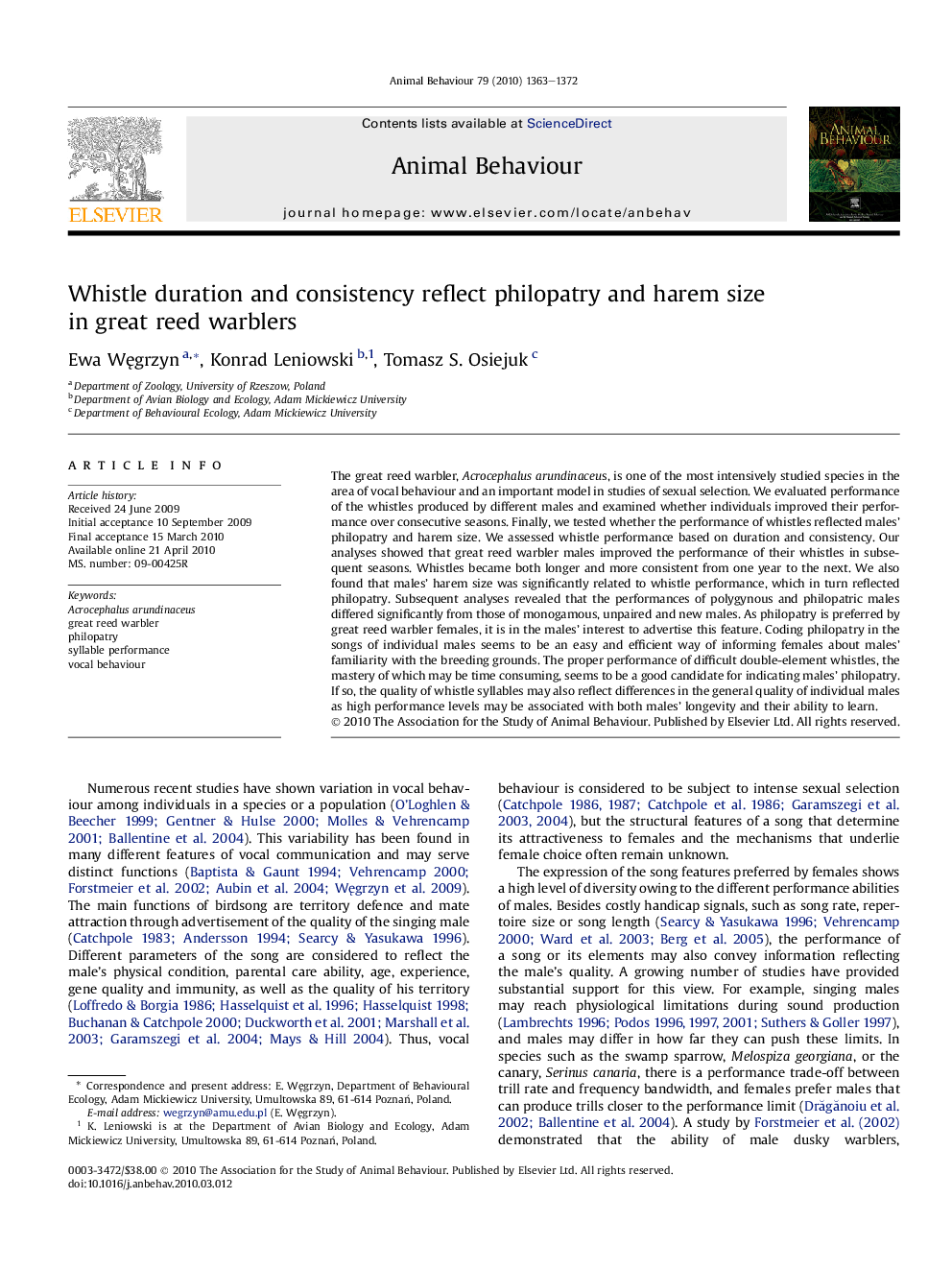| Article ID | Journal | Published Year | Pages | File Type |
|---|---|---|---|---|
| 2417249 | Animal Behaviour | 2010 | 10 Pages |
The great reed warbler, Acrocephalus arundinaceus, is one of the most intensively studied species in the area of vocal behaviour and an important model in studies of sexual selection. We evaluated performance of the whistles produced by different males and examined whether individuals improved their performance over consecutive seasons. Finally, we tested whether the performance of whistles reflected males’ philopatry and harem size. We assessed whistle performance based on duration and consistency. Our analyses showed that great reed warbler males improved the performance of their whistles in subsequent seasons. Whistles became both longer and more consistent from one year to the next. We also found that males’ harem size was significantly related to whistle performance, which in turn reflected philopatry. Subsequent analyses revealed that the performances of polygynous and philopatric males differed significantly from those of monogamous, unpaired and new males. As philopatry is preferred by great reed warbler females, it is in the males’ interest to advertise this feature. Coding philopatry in the songs of individual males seems to be an easy and efficient way of informing females about males’ familiarity with the breeding grounds. The proper performance of difficult double-element whistles, the mastery of which may be time consuming, seems to be a good candidate for indicating males’ philopatry. If so, the quality of whistle syllables may also reflect differences in the general quality of individual males as high performance levels may be associated with both males’ longevity and their ability to learn.
